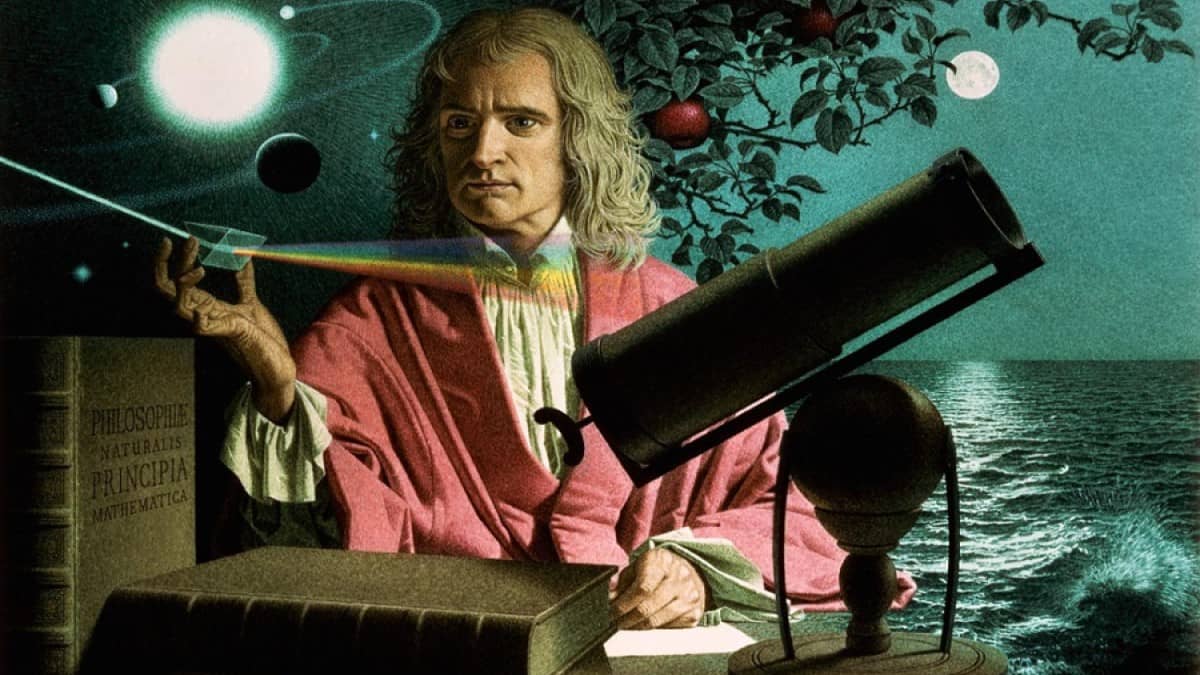What are Newton’s three laws of motion? In the late 17th century, English physicist and mathematician Isaac Newton laid the foundations of mechanical science with three simple but revolutionary scientific laws that are still in use today.
Newton’s laws
When Isaac Newton was still a student, the academic understanding of force and motion was based on the ideas of the Ancient Greek philosopher Aristotle, who argued that an object would only move when a force affected it. For example, according to Aristotle, a thrown object that moves freely continues its movement as it is pushed by the air currents. Medieval thinkers elaborated this idea, along with the theory of “impetus”, which argued that the force acting on a thrown object was stored in the body and was slowly diminished. Italian mathematician and physicist Galileo Galilei proved these ideas to be false when he realized that an object could continue to move at the same speed and in the same direction without any force acting on it, for example, gravity or air resistance. Newton expressed this idea in a mathematical form (Philosophiae Naturalis Principia Mathematica, 1867), as the first law of the three laws he put forward. In most cases, Newton’s Law was able to accurately predict and define the motion of an object. Albert Einstein‘s theory of relativity, on the other hand, changes the way Newton’s laws work at very high speeds or in strong gravitational fields. This makes it hard to be sure about these laws.
Newton’s First Law
Newton’s first law states that an object will remain stagnant or continue its movement in a straight line unless a force is exerted on it. Force is acting on most objects from different directions at any time, but these forces are often balanced. For example, a book standing on a table is pulled down by gravity, but the table exerts an upward force of the same magnitude on the book. As the forces are balanced, the book remains immobile.
Newton’s Second Law
Newton’s second law includes momentum, the product of an object’s mass and its velocity. The law states that the change in momentum is proportional to the exerted force. Therefore, a doubled force accelerates an object twice as much, but the same force exerted on an object with twice the mass accelerates the object only half as much. The second law is often summarized in a simple equation: a = F/m, where a indicates acceleration, F force, and m mass.
Newton’s Third Law
Newton’s third law states that the force appears in pairs. When one object exerts a force on another, the second object exerts an equal and opposite force on the first object. If one of the objects is motionless, the other object will continue to move; if you slide on an ice rink and hit the wall on the rink, you will kick back because the wall exerts a force on you. If both objects are moving, then the object with less mass accelerates more than the other; for example, a cannon kicks back slightly when it fires bullets at high speed.
Explanation of the First Law of Motion
- At rest
A ball remains motionless unless a force is applied to it. The weight of the ball pulls it down, but the base applies an upward-acting force of the same magnitude, and the net force becomes zero.
- In motion
Once the ball moves, it maintains its speed or a combination of speed and direction. In fact, the friction force between the ball and the surface slows the ball.
- An external force
A force changes the speed of the ball by changing its acceleration, such as when kicking a ball. The ball accelerates, slows, or changes its direction without changing its speed.
Explanation of the Second Law of Motion
- A small mass, a small force
Applied force leads to the acceleration of the body. Acceleration, or the change in velocity per second, depends on the magnitude of the force and also on the mass of the object.
- A small mass, double force
Since a = F/m, two times the applied force will double the acceleration, provided that the mass is the same.
- Double mass, double force
If the force is doubled (four times greater than its initial value) and the mass is doubled, the same acceleration value is obtained as earlier.
Explanation of the Third Law of Motion
- Equal and opposite
Two people on a single skateboard push each other away. But even if only one person is pushing, the other person’s body creates a reaction force of the same size in the opposite direction.
- Equal masses
If two people have the same mass, they will be accelerated equally; but if someone has less mass, it moves away faster because the same force creates greater acceleration.
Saturn V and Voyager 1
The Saturn V rocket, which was used by NASA in the Apollo missions between 1960 and 1970, had a weight of 28 million Newtons, and its engine produced 34 million Newton forces.
The speed of Voyager 1 when it leaves the solar system is 50,000 km/h (31,000 m/h). Voyager maintains its velocity in space because there is no air resistance acting on it.


